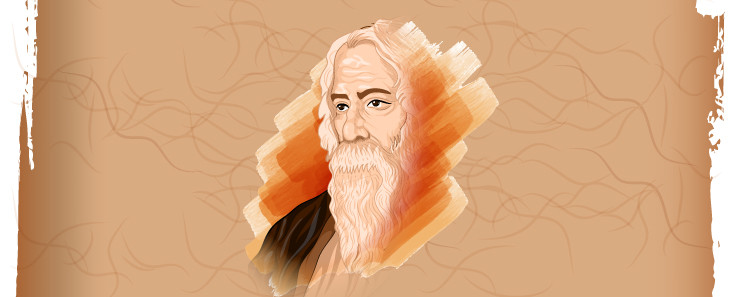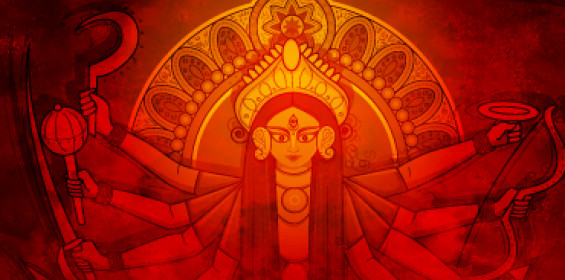Amazing facts about India
Just before the Kurukshetra battle, Kunti tied a Raksha Bandhan on her grandson, Abhimanyu’s wrist. Shachi, the wife of Indra, tied a rakhi on her husband before he undertook the battle against the asura King Mahabali. When Lord Krishna was attacked repeatedly by Kamsa and his allies, Yashoda (Krishna’s mother) tied a sacred thread on him as protection. And later, during the battle between Krishna and Shishupala, Draupadi tore a strip from her saree, and tied it around Krishna’s bleeding finger.

Since millennia, women in India have been regarded as the embodiment of strength (shakthi). Harken the story of Savitri who argued with Yama, the Lord of Death, and brought her husband back to life. A woman is blessed with sankalpa shakthi, the power of will and determination. It is with this power, shakthi, that a woman protects. On Raksha Bandana of yore, a woman would take a vow to protect her brother by tying a sacred thread on his wrist. And as the above and other stories have reflected, this bandhana (bond) is not reserved for brothers and sisters. It encompasses every relationship of a woman - be it a spouse, child, or grandson.
Goddess Lakshmi ties a bond
It is said that strength cannot be physical prowess only. The greatest strength comes from one’s inner landscape - that of feelings, emotions, intellect, and will. If one loses inner strength then outward physical strength is of little consequence. Our ancients believed women possessed all these strengths.
In earlier times, akshada, unbroken rice, was rolled into a longish piece of cloth, which was used as a band to tie. The string is tied as a guard against ill health, evil eye, and generally for protection. This is called as Rakshai. Today, the rice and thread have traversed a different journey - one that has been colorful, with different shapes, sizes, some with cartoons, while others with gold pattas. Yet the sentiment remains timeless. That of loyalty, protection, love, and affection.

The festival, Raksha Bandhan falls in the auspicious month of Shravana and symbolises mutual protection and celebration. The sister ties the string on her brother. It is not just the brother who promises to protect her, but the sister also prays for the welfare, well-being, and protection of the brother. It is a mutual bond between them . The Puranas say that Goddess Lakshmi approached Maharaja Bali with a rakhi. The Goddess was distraught since Lord Vishnu had agreed to Bali’s request to stay in Patala Loka. As the Raksha Bandhan custom demands, Bali asked Lakshmi, his sister, what she wanted. And the Goddess asked for Vishnu to return to Vaikuntha.
Isn’t our cultural heritage fascinating? Equally intriguing is our tradition of healing and health. Thousands of years ago, our ancient sages unlocked techniques and wisdom to maintain holistic health. Know more about these secrets at The Art of Living Meditation and Breath Program.
Discover India's spiritual heritage and learn about the mind & breath. I'd like to know more>>
To protect their kingdoms...
History is peppered with stories of courageous women who sent a rakhi to their enemies to protect their husbands and kingdoms.
Alexander’s wife and King Pururuva
Alexander’s wife, known as Roxana in Greek and Roshanak in the North West of India, sent a Rakshai, to King Pururuva, requesting Puru not to kill Alexander.
Rani Karnavati and Mughal King Humayun
Rani Karnavati, the widowed Rajput Queen of Chittor, Rajasthan, sent a bracelet as a Rakshai to the Mughal King Humayun in the year 1535 CE. She sought help against the Sultan of Gujarat, Bahadurshah, who wanted to capture the Chittor Fort.
Maharani Jindan and Maharaja Ranjit Singh
Maharaja Ranjit Singh, was the king of the Sikh empire, who ruled from Lahore. His wife, Maharani Jindan, in order to encourage interfaith ties, sent a Rakshai to the Hindu King of Nepal, Jang Bhaadur, in 1849.
This bandhan was later honoured by the Nepal King, when he gave refuge to Maharani Jinda, after the downfall of the Sikh Empire against the British.
Of animals & communities
Interestingly, this bond of love and protection is extended to animals in Odisha. Here Raksha Bandhan is celebrated as Gamha Purnima. On this day the domesticated cows and bulls are worshipped. The cow is given a traditional bath early in the morning and a garland made of fresh flowers is put around its neck. Thus we see that Raksha Bandhan bond was mutual between humans and animals (pashu), epitomizing love and respect for every being in the circle of life.

Raksha Bandhan was also celebrated to wipe away feelings of caste and class.
Brahmins used to tie rakhi to Kshatriyas and other varnas. During the independence struggle, Rabindranath Tagore made Raksha Bandhan popular to create a bond of brotherhood and sisterhood between different communities. This bond was further reinforced when the British forcibly split Bengal in 1923.
Raksha Bandhan also features in one of Rabindranath Tagore’s famous poems:
“The love in my body and heart
For the earth’s shadow and light
Has stayed over years.
With its cares and its hope it has thrown
A language of its own
Into blue skies.
It lives in my joys and glooms
In the spring night’s buds and blossoms
Like a Rakhi-band
On the future’s hand.”
Thus this ancient tradition revelled in the celebration of a powerful bond. Now that we’ve come this far, are the mithias and gifts ready?
The material has been taken from @bharathgyan. This research team, led by a passionate husband-wife duo - Dr. DK Hari and Dr. Hema Hari, unearth some of India’s untold stories and make them contemporary. You can click here to buy any of their books on Indian civilization.



































